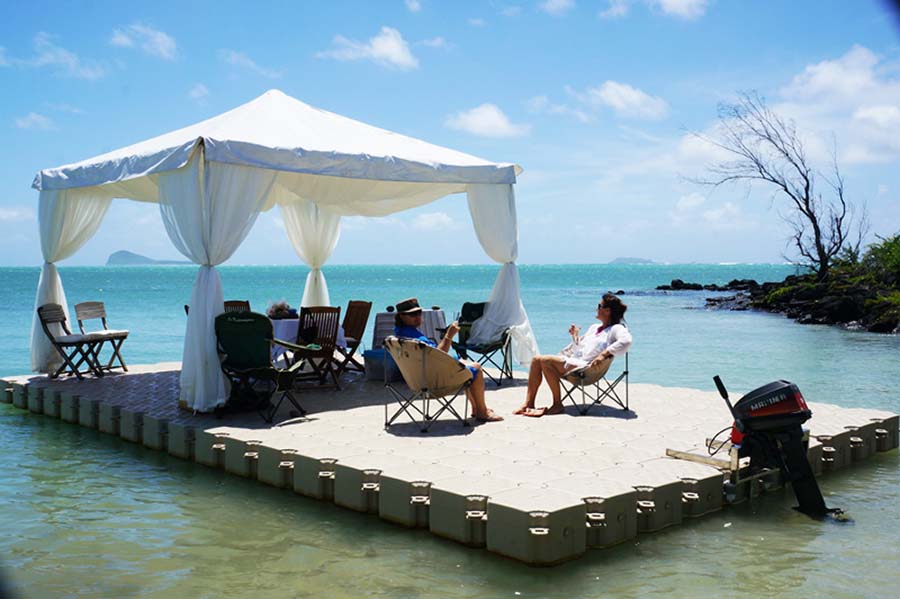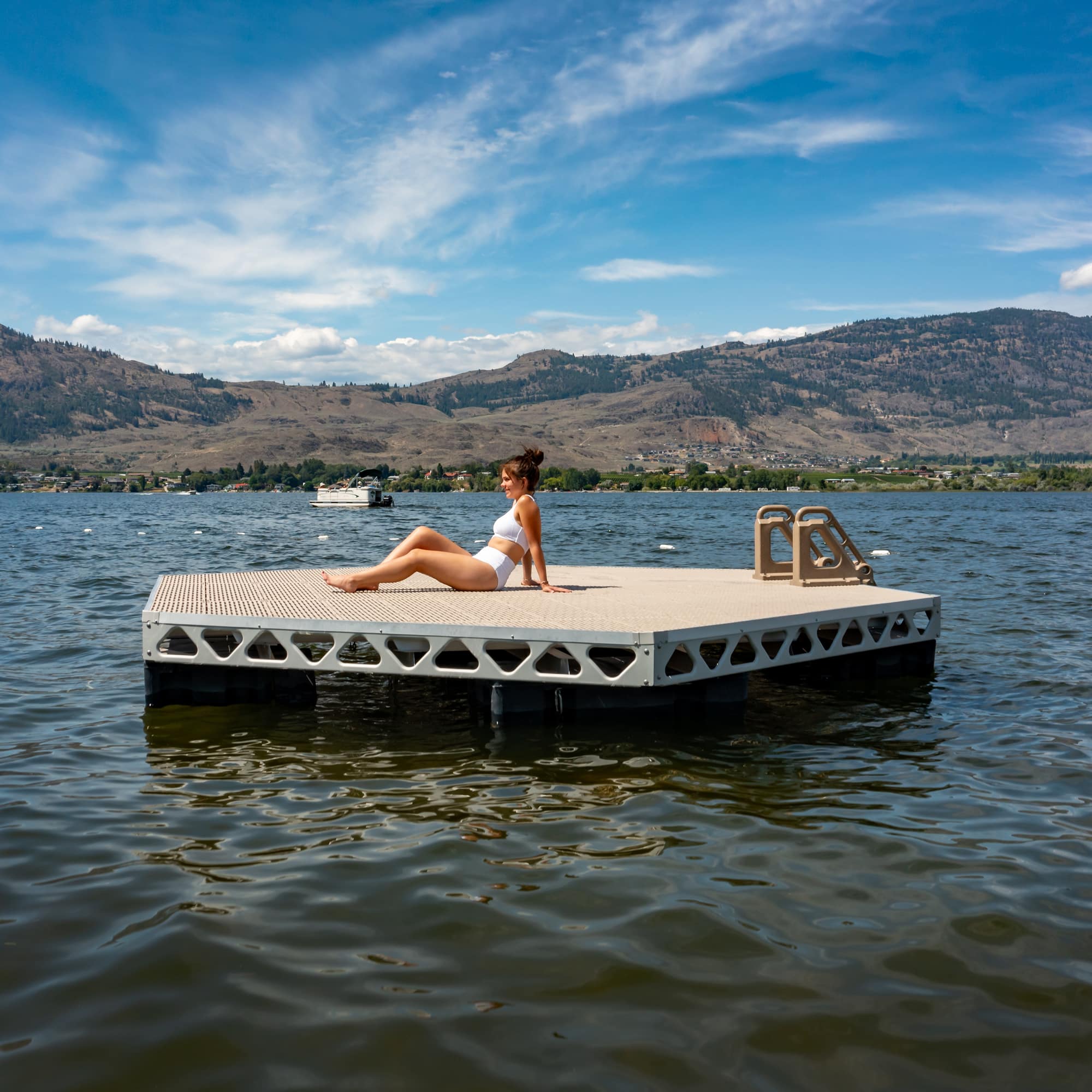Produce the Perfect Docking Solution With Floating Docks
Floating docks present a functional solution for a selection of maritime demands, adjusting effortlessly to varying water levels and varied vessel types. Their modular nature allows for fast installation and relocation, yet the option of proper products and design functions is important for guaranteeing both functionality and visual charm. As we discover the essential elements that add to the effectiveness of floating docks, several crucial aspects relating to security and maintenance will certainly arise, questioning concerning how to optimize your docking experience. The succeeding conversation will certainly light up these crucial considerations.

Advantages of Floating Docks
Floating docks deal numerous advantages that make them an optimal choice for numerous maritime applications. One of the main advantages is their flexibility to changing water levels. Unlike taken care of docks, floating docks fluctuate with the trend, guaranteeing constant ease of access for vessels. This feature is particularly important in locations vulnerable to considerable tidal fluctuations or seasonal water level modifications.
Furthermore, floating docks are usually much easier and quicker to set up compared to conventional set structures. Their modular design enables uncomplicated assembly and disassembly, facilitating maintenance and relocation when required. This adaptability is especially useful for temporary applications or in environments where problems might change.
Floating docks likewise have a tendency to be a lot more environmentally pleasant, as they reduce disruption to the seabed and surrounding marine ecological communities. Their resilient nature minimizes the risk of damages to marine life, advertising a healthier environment. Furthermore, these docks can be customized to accommodate numerous vessel dimensions, guaranteeing that they meet details functional demands - dock company.
Eventually, the mix of adaptability, convenience of installation, and environmental factors to consider makes floating docks a highly efficient remedy for a large range of maritime requirements.
Picking the Right Materials
Choosing the appropriate materials for floating docks is critical to ensure durability, stability, and durability. The choice of materials directly influences the dock's efficiency in various environmental conditions, consisting of exposure to water, sunshine, and potential wear from aquatic traffic.
Typical materials made use of for floating docks include light weight aluminum, timber, and high-density polyethylene (HDPE) Aluminum is light-weight, corrosion-resistant, and requires minimal maintenance, making it a superb option for long life. Its initial expense can be higher contrasted to other materials.
Wood, while aesthetically attractive and offering a conventional appearance, can be at risk to rot and pest damage if not appropriately dealt with. Making use of pressure-treated timber or naturally durable varieties like cedar or redwood can reduce these issues.
HDPE is a preferred option due to its resistance to UV rays and chemicals, in addition to being eco pleasant. floating dock builder. It is light-weight and offered in different colors, permitting modification
Inevitably, the best product option will depend upon particular needs, including spending plan, preferred aesthetic appeals, and ecological considerations. Mindful examination of these elements will certainly lead to a effective and resilient floating dock option.
Design Factors To Consider for Security
When developing floating docks, guaranteeing stability is a basic aspect that this article can significantly impact their capability and safety. Stability in floating dock layout is influenced by various aspects, consisting of buoyancy, weight circulation, and the setup of components.
Weight circulation is important; equally distributing loads across the dock stops tilting and improves stability. This can be accomplished with calculated positioning of docking tools, such as fenders and cleats, along with correct spacing of drifts. In addition, the dimensions of the dock need to be attentively intended. Broader layouts can provide increased security, specifically in rough water conditions, while longer docks may call for extra assistances to stop sagging.
Another crucial factor to consider is the environmental influence, consisting of wave activity and wind. Incorporating features such as sidewalls or skirting can help mitigate the results of environmental forces, keeping stability in adverse problems. Eventually, a combination of thoughtful design, product choice, and understanding of ecological variables will produce a floating dock that satisfies both stability and safety and security demands.
Installment Tips and Techniques

Following, protect the needed licenses and stick to regional policies, which may dictate installation methods and ecological factors to consider. If called for, engage a qualified contractor experienced in floating dock setups. Use premium materials designed for aquatic atmospheres to improve sturdiness and longevity.
When placing the dock, straighten it alongside the coastline to promote simple access. Make certain that the anchoring system is durable, employing cinder block or helical supports to stabilize the dock versus wind and wave activity. It's important to account for seasonal water degree changes, consisting of prospective ice movement in colder environments.
During the installment, confirm the dock's floatation and stability prior to finalizing the anchoring. Frequently inspect the setup for any indicators of wear or damages. By following these methods and suggestions, you can attain a safe and secure, practical, and cosmetically pleasing floating dock installation that fulfills your demands.
Upkeep and Care Standards
Caring and maintaining for floating docks is critical to prolonging their lifespan and making certain secure use. Routine evaluations must be performed to recognize any type of signs of wear, damage, or marine growth. Try to find fractures, loose fittings, or blemished locations on the dock's surface area, as these concerns can compromise structural integrity.
Cleansing is essential. Utilize a pressure washer to get rid of algae, barnacles, and debris, which can accumulate from this source in time. For stubborn growth, take into consideration eco-friendly cleaner that won't damage water life.
In addition, check the mooring lines and supports regularly to ensure they are free and safe and secure from rust. Change any type of torn or damaged lines immediately to keep stability.
Throughout severe weather, such as storms or freezing problems, take preventive procedures. Secure the dock with additional mooring lines and, if click for more feasible, get rid of any kind of detachable parts to avoid damages.
Verdict
In final thought, the implementation of floating docks provides a reliable and versatile docking option suitable for numerous maritime applications. With appropriate installation and regular upkeep, floating docks can supply effective and reputable docking experiences for a broad array of vessels.
As we check out the crucial elements that add to the efficiency of floating docks, numerous essential variables relating to security and upkeep will emerge, elevating questions regarding just how to maximize your docking experience. Unlike fixed docks, floating docks rise and autumn with the tide, ensuring constant access for vessels.When designing floating docks, making sure security is a fundamental aspect that can substantially impact their functionality and security. Stability in floating dock design is affected by numerous variables, including buoyancy, weight distribution, and the setup of elements. Inevitably, a combination of thoughtful style, material choice, and understanding of ecological aspects will yield a floating dock that meets both security and security demands.